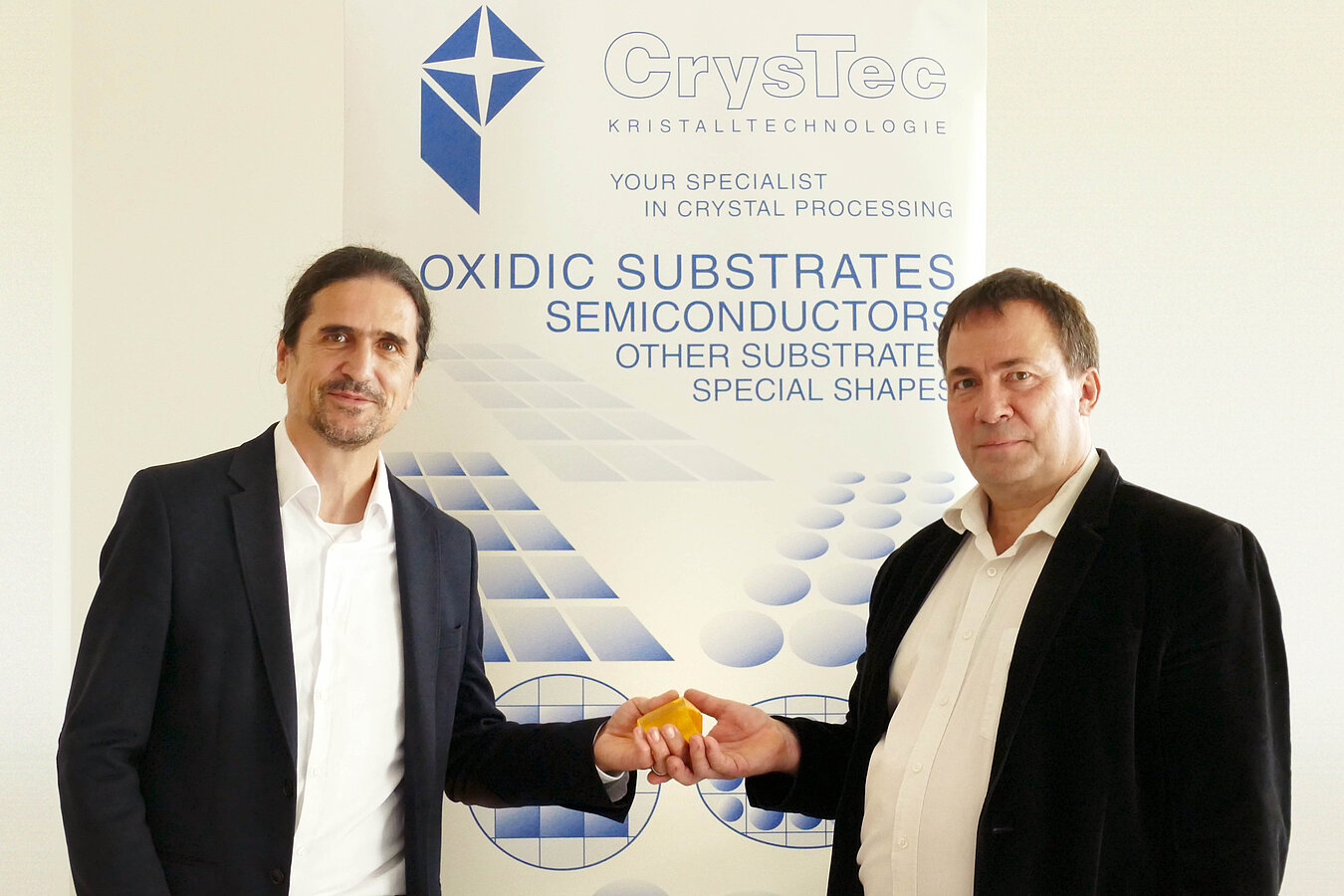Along with the energy transition, the structure of energy grids is undergoing a change as well – shifting from centralized combined heat and power plants to decentralized energy generators. With many small generators and storage facilities, however, energy has to be constantly converted. So, in order to convert the direct current generated by solar plants into alternating current, for example, switches are needed that transform electricity at the push of a button and allow it to flow highly efficiently without causing major losses due to heating. The same applies to e-mobility: if battery ranges of up to 1,000 kilometers are to be achieved, electricity needs to reach the motor without any significant heat losses. “For both areas, a new generation of power electronics is required, and the buzzword for this is gallium oxide,” says Prof. Thomas Schröder, Director of the ´Leibniz-Institut für Kristallzüchtung (IKZ)` in Berlin-Adlershof. The use of gallium oxide makes it possible to work more efficiently at much higher power levels than before without the switch components heating up so much that they melt.
At the IKZ, the semiconductor material Ga2O3 has been grown and investigated for more than 15 years. The efficiency of this material in power electronics applications far outshines the current “stars” of semiconductor technology – float-zone silicon (Si), silicon carbide (SiC) and gallium nitride (GaN). Meanwhile, researchers are able to pull single crystals with a diameter of 2 inches (~5 centimeters) from the melt. The IKZ is currently the only institute in the EU where single crystals of gallium oxide can be produced. “Our competence is clearly in plant engineering, crystal growth and crystal analysis. What we still need to develop, however, is how to effectively cut large-area substrates with high precision from the single crystals, which are required to comprehensively explore and optimize the material for power electronics,” emphasizes Dr. Thomas Straubinger who, as head of the IKZ Section ‘Crystalline Materials for Electronics’, is in charge of the prototyping of gallium oxide substrates.
At this point, the medium-sized company CrysTec, located in the Innovations-Park Wuhlheide, comes into play. For many years now, this company has had ties with the IKZ through research projects and substrate preparations from IKZ´s special crystals for the global research market of oxide electronic. The first joint steps in the field of Ga2O3 were taken about 10 years ago. From now on, both partners will research and develop the procedures to precisely process the Ga2O3 crystals from the IKZ into wafers with a diameter of up to 2 inches. The worldwide distribution network of CrysTec will help to resell the material to universities, research institutes and the industry. “Owing to the cooperation with the IKZ, CrysTec is able to offer world-leading products for research and innovative applications. To extend this portfolio by including Ga2O3 is another important step that gives us advantages in the market", says Knut Peters, Managing Director of CrysTec. At present, IKZ and CrysTec are working together on the development of efficient growing, processing and epitaxy technologies and the identification of commercially viable substrate prototype specifications in the funded project ‘GO-Wafer: Development of a technology for the production of standardized gallium oxide wafers with defined tilting from the [100] and [001] directions’ (KK5276901AG1) funded by the German Federal Ministry of Economics and Climate Protection (BMWK).
The cooperation is perfectly in line with IKZ’s mission, to not only produce and characterize new materials, but also to make them available to a broad academic-university and industrial community. As a result of the cooperation, the institute is now in a position for the first time to offer gallium oxide to the external market, emphasizes Thomas Schröder. “We would like to see as many groups as possible around the world working on this and contributing their expertise to advance the state of knowledge on gallium oxide.”
Due to the silicon carbide switch, the range of electric cars could already be significantly increased. If the promising research results of the IKZ and its partners are confirmed, gallium oxide could enable the next leap in range. To date, the semiconductor is not yet available on the market. “However, there are already major manufacturers and users of power electronics approaching us,” says Thomas Schröder. “They don't want to be caught unprepared, but to secure potential innovations early on.”


